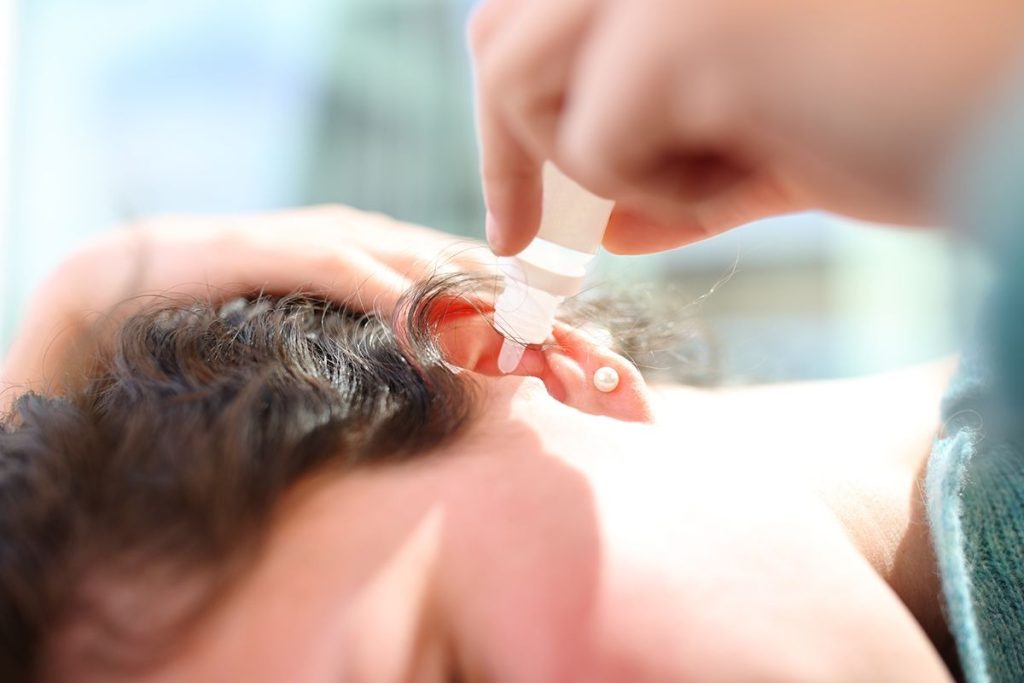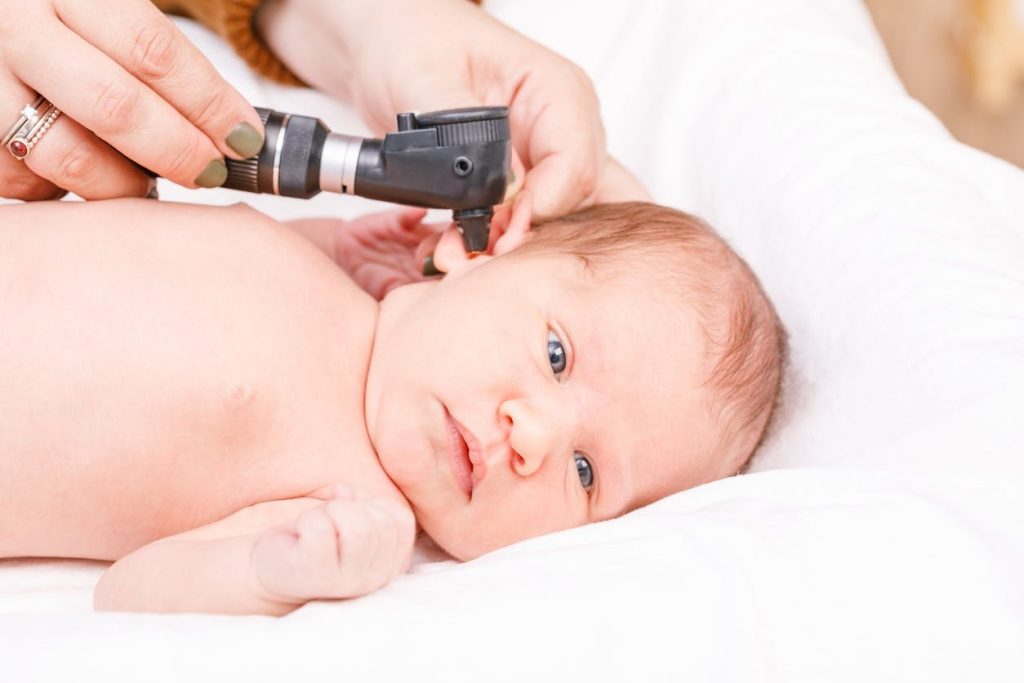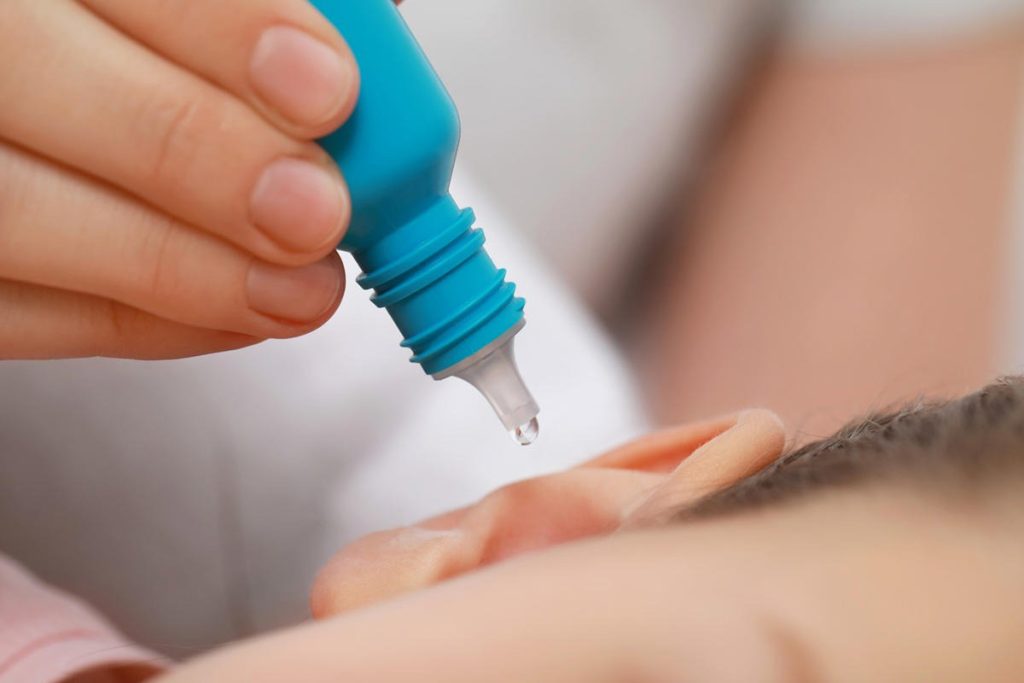
Fluid in the ear can be painful and even cause hearing loss, mainly in kids. ENT specialists use myringotomy and pressure equalization tubes to remove this fluid. Myringotomy is a surgery that lets fluid drain from the middle ear. It treats ear infections and glue ear.
We aim to teach readers about these methods and their benefits. Knowing about these options helps patients choose the best treatment for them.
Knowing how ear fluid drains is key to diagnosing and treating problems. The ear’s fluid management is vital for health and avoiding issues like hearing loss or infections.
The Eustachian tube is essential for ear fluid drainage. It opens briefly to let secretions move from the middle ear to the nasopharynx. This keeps ear pressure balanced and prevents fluid buildup.
Key aspects of normal ear fluid drainage include:

Fluid buildup in the ear can happen for many reasons. These include Eustachian tube dysfunction, allergies, colds, or sinus infections. If the Eustachian tube doesn’t open properly, fluid can build up in the middle ear.
Common causes include:
It’s important to know the symptoms of ear fluid to get medical help quickly. Common signs are ear pain, hearing loss, and feeling like the ear is full.
Symptoms to watch out for:
If you notice these symptoms, see a healthcare professional. They can find the cause and suggest treatments, like learning how to get rid of fluid in ear or draining eardrum fluid.
Understanding the Eustachian tube’s role is key to knowing how ear drainage works. The Eustachian tube links the middle ear to the back of the nose and throat. It helps regulate pressure and drain mucus.
The Eustachian tube plays a big role in keeping ears healthy. It opens and closes to balance air pressure in the middle ear. This helps remove debris and excess fluid.

Eustachian tube dysfunction happens when the tube doesn’t work right. It can cause discomfort, hearing problems, and fluid buildup. This can be due to allergies, colds, or other issues.
The mucociliary clearance process is also important for ear drainage. It uses tiny hair-like structures to move mucus and debris out of the middle ear. This keeps the middle ear clean and healthy.
Otitis Media with Effusion is a condition where the middle ear fills with fluid. This happens even when there’s no acute infection. It can cause hearing problems, ear pain, and may affect development if not treated.
The fluid in the middle ear can be thin and watery or thick and glue-like. The thick fluid is harder to drain and can really hurt the hearing.
Key characteristics of middle ear fluid in OME include:
Untreated OME can cause hearing loss and delayed speech in kids. It also raises the risk of more ear infections. Hearing loss can hurt school and social skills.
The importance of early treatment for OME is clear.
Some groups are more likely to get OME. Kids under 5 are at high risk because their Eustachian tubes are not fully developed. Adults with allergies or colds are also at risk.
Knowing who is at risk helps in managing and treating OME. We’ll look at treatments like myringotomy and pressure equalization tubes next.
When ear fluid is a big problem, a myringotomy might be suggested. This surgery makes a small cut in the eardrum. It lets trapped fluid drain out.
A myringotomy helps when there’s too much fluid in the middle ear. It’s done when other treatments don’t work.
The word “myringotomy” means the cut made in the eardrum. It’s a careful procedure to avoid harm to nearby parts.
Myringotomy is suggested for those with too much fluid in the middle ear. This is called otitis media with effusion (OME). It can cause hearing loss, discomfort, and more ear infections.
It’s also for people who haven’t gotten better with other treatments. Or those with serious hearing problems or other issues.
The myringotomy procedure has several steps:
Myringotomy is a helpful surgery for those with ongoing ear fluid issues. Knowing about the procedure and its steps helps patients make better choices for their care.
Pressure Equalization (PE) tubes have changed how we treat ear fluid problems in kids and adults. These small tubes help the middle ear breathe and drain fluid. This cuts down on infections and boosts hearing.
There are many kinds of tympanostomy tubes, or PE tubes. Each type is made for different needs. The doctor picks the right one based on the patient’s situation and how long the tube will be needed.
PE tubes let fluid drain from the middle ear. This clears out fluid and balances ear pressure. This is key to hearing well and feeling comfortable.
Benefits of PE Tubes include fewer ear infections, better hearing, and less discomfort from fluid buildup.
PE tubes work well for both kids and adults. Kids see big improvements in 80-90% of cases. Adults also see benefits, but results can vary based on their ear issues.
How long PE tubes stay in varies by type and patient needs. Usually, they last 6 to 24 months before falling out. Sometimes, they need to be removed surgically if they don’t come out naturally or if problems arise.
We keep a close eye on our patients after tube placement. This ensures the tubes work right and tackles any problems quickly.
Managing otorrhea and following post-procedure guidelines are key for PE tube patients. Proper care prevents complications and ensures the procedure’s success.
Otorrhea, or discharge through PE tubes, is common after the procedure. It’s important to manage this discharge to prevent infection and aid healing. Antibiotic ear drops are often given to treat and prevent infection.
Here are some key points to consider when managing discharge:
Antibiotic ear drops are vital in managing otorrhea by treating bacterial infections. It’s important to follow the treatment regimen carefully for effectiveness.
In some cases, professional suctioning may be needed to remove thick or persistent discharge. This should be done by a healthcare professional to avoid damaging the ear or the PE tube.
After PE tube placement, patients are often advised on certain activity restrictions. These are to protect the ear and ensure proper healing. These may include:
By following these guidelines and maintaining good ear hygiene, patients can minimize the risk of complications. This ensures a successful outcome from their PE tube placement procedure.
ENT advancements have greatly improved ear fluid drainage management. This offers effective solutions for those with middle ear effusion and related issues. Procedures like myringotomy and the use of tympanostomy tubes are now common. They provide relief and prevent complications from fluid buildup.
Liv Hospital leads in delivering top-notch care, using the latest academic protocols and supporting international patients. For example, nearly 667,000 tube insertions are done yearly in kids under 15 in the U.S. More details on these procedures can be found on the National Center for Biotechnology Information.
By using proven treatments and improving ENT practices, healthcare can greatly enhance patient results. This ensures effective ear fluid drainage and improves life quality for those affected.
A myringotomy is a surgery where a small cut is made in the eardrum. This lets fluid out of the middle ear. It relieves pressure, improves hearing, and stops more problems.
Tympanostomy tubes, or ear tubes, are small tubes put into the eardrum. They help drain and ventilate the middle ear. They keep pressure equal and stop fluid buildup.
The Eustachian tube connects the middle ear to the back of the throat. It helps with air pressure and draining mucus. If it doesn’t work right, fluid can build up and cause ear problems.
OME is when fluid builds up in the middle ear. It can cause hearing loss, ear pain, and discomfort. If not treated, it can get worse.
PE tubes help drain and ventilate the middle ear. They keep pressure equal and stop fluid buildup. They work for both kids and adults.
PE tubes are usually left in for 6-12 months. Removing them is a simple procedure done by an ENT specialist.
Otorrhea is treated with antibiotic ear drops. Sometimes, professional suctioning is needed. Patients are also told to avoid activities that might make it worse.
Yes, adults can get myringotomy and PE tube placement for ear fluid issues. The process is similar to for kids, and it works well.
ENT specialists can effectively diagnose and treat ear fluid issues. They provide personalized care to prevent more problems.
To prevent ear fluid buildup, keep your ears clean, avoid allergens and irritants. See a doctor if symptoms don’t go away or get worse.
Subscribe to our e-newsletter to stay informed about the latest innovations in the world of health and exclusive offers!
WhatsApp us